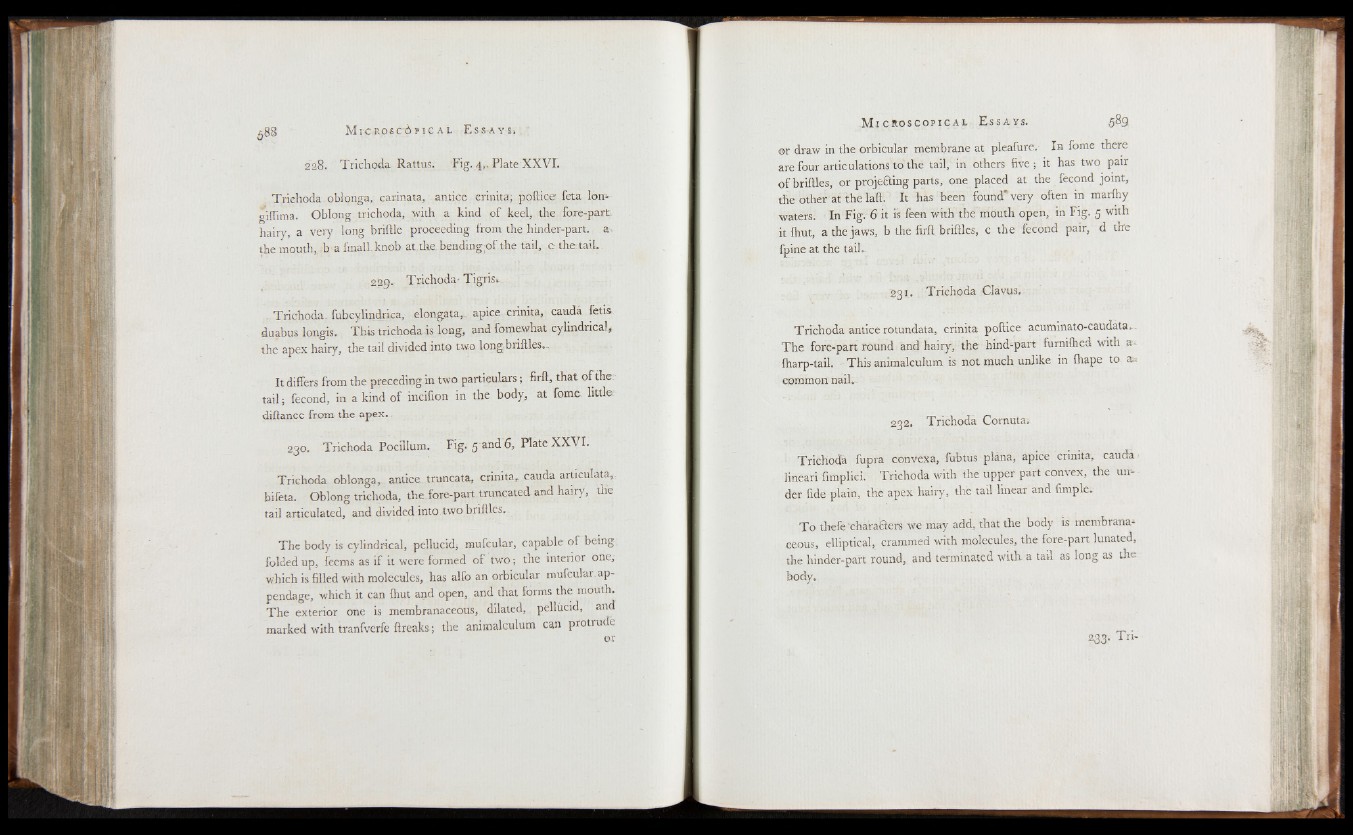
ö8§ M i c r o s c o p i c a l E s s a y s .
228. Trichoda Rattus. Fig. 4,, Plate XXVI.
Trichoda oblonga, carinata, antice crinita, podice feta Ion-
giflima. Oblong trichoda, with a kind of keel, the fore-part
hairy, a very long bridle proceeding from the hinder-part, a
the mouth, b a fmalLknob at.the bendingof the tail, c the. tail..
229. Trichoda- Tigris^
Trichoda. fubcylindrica, elongata,. apice crinita, cauda fetis
duabus longis. This trichoda is long, and fomewhat cylindrical,
the apex hairy, the tail divided into two long bridles.-
It differs from the preceding in two particulars; fird, that of the
tail; fecond, in a kind of incidon in the body, at fome little
didance from the apex..
230. Trichoda Pocillum. Fig. 5 and 6, Plate XXVI.
Trichoda oblonga,. antice truncata, crinita, cauda articulata,
bifeta. Oblong trichoda, the. fore-part truncated and hairy, the
tail articulated, and divided into two bridles,.
The body is cylindrical, pellucid; mufcular, capable o f being
folded up, feems as if it were formed o f tw o; the interior one,
which is filled with molecules, has alfo an orbicular mufcular.appendage,
which it can {hut and open, and that forms the mouth.
The exterior one is membranaceous, dilated, pellucid, and
marked with tranfverfe dreaks; the animalculum can protrude
or
or draw in the orbicular membrane at pleafure. In fome there
are four articulations to the tail, in others five; it has two pair
o f bridles, or projecting parts, one placed at the fecond joint,
the other at the lad. It has been found* very often in marfhy
waters. In Fig; 6 it is feen with the mouth open, in Fig. 5 with
it fhut, a the jaws, b the fird bridles, c the fecond pair, d the
fpine at the tail.
231. Trichoda Clavus.
Trichoda antice rotundata, crinita podice acuminato-caudata -
The fore-part round and hairy, the hind-part furnifhed with a,
{harp-tail. - This animalculum is not much unlike in {hape to a;;
common nail.
232. Trichoda Cornuta.
Trichoda fupra convexa, fubtus plana, apice crinita, cauda
lineari fimplici. Trichoda with the upper part convex, the under
fide plain, the apex hairy, the tail linear and Ample.
T o thefe characters we may add, that the body is membranaceous,
elliptical, crammed with molecules, the fore-part lunated,
the hinder-part round, and terminated with a tail as long as the
body.